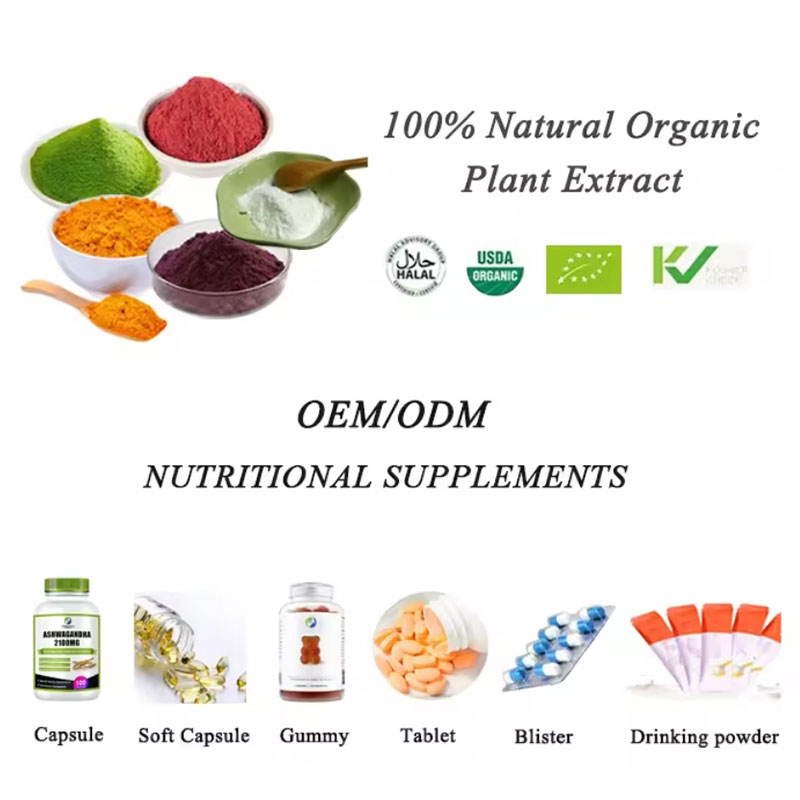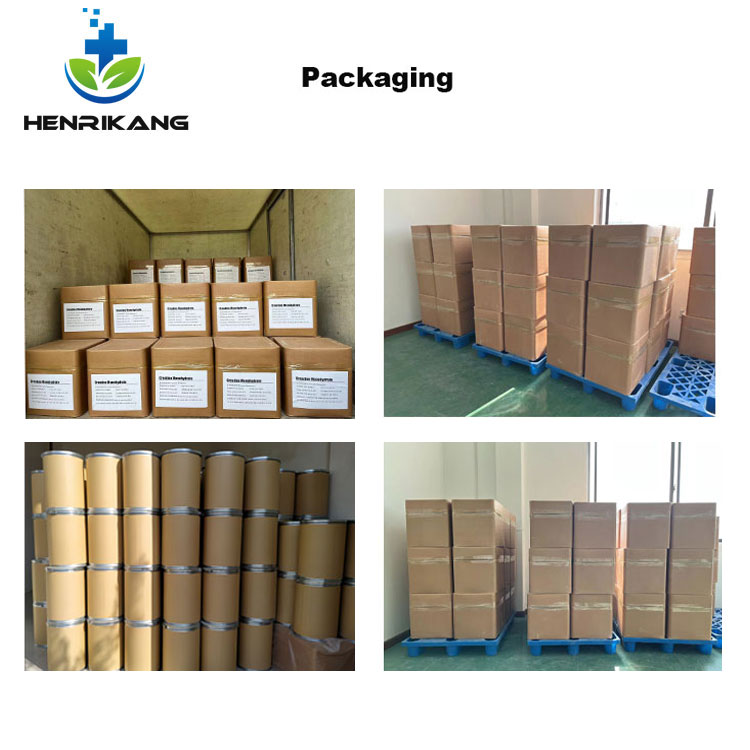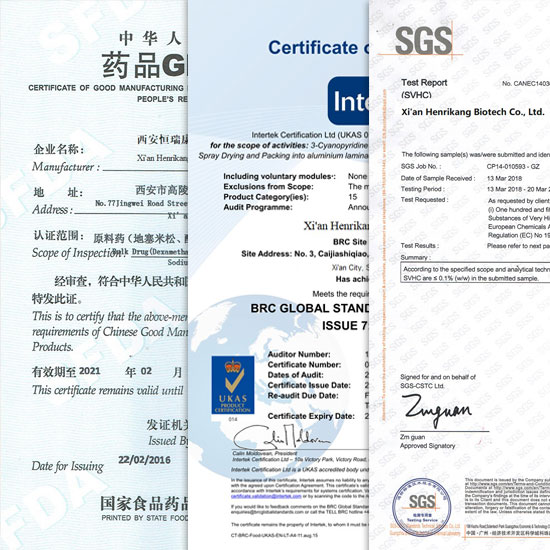Pharmaceutical
Human APIs Powder
- Respiratory Drugs Raw Material
- Antiviral Antibacterial
- Antipyretic Analgesics
- Antihistamine Drugs
- Antineoplastic
- Cosmetic Raw Material
OEM & ODM
- Capsule
- Softgel Capsule
- Gummies
- Drop & drinks
- Tablets
- Effervescent Tablet
- Gel
- Powder
- Chewing Gum
- Pet Supplement
Veterinary raw materials
Phone: 86-13279202917
E-mail: sales@nutrition-oem.com
Add: Fengcheng 2nd Road, Weiyang District, Xi'an, Shaanxi, China
Melatonin raw Materials Powder for sleep


Product Overview:
Melatonin is an indispensable natural hormone for the human body. It controls and affects the secretion of other hormones. When the amount of melatonin in the body decreases, various functions of the human body will be affected, and various diseases will follow. Studies have shown that the secretion of melatonin in the human body begins to decrease after middle age, and in old age, the secretion amount is negligible. Supplementing enough melatonin as early as possible can improve the function of the endocrine system, enhance immunity, improve anti-stress and anti-oxidation functions, improve sleep, slow down the aging of the human body, and slow down the degeneration of sexual organs; melatonin can also help prevent and treat cancer, and is particularly helpful for habitual insomnia.
Product Attributes
CAS:73-31-4
MF:C13H16N2O2
MW:232.28
EINECS:200-797-7
OEM:Customized logo is welcome, Packing as your requirement. offering private label
Specification: 99% min Melatonin Powder
Sample:Melatonin Powder Avaliable
Packaging:1kg/bag, 25kg/drum
Brand: Ausreson
Appearance:white powder
Storage: Cool Dry Place
Shelf Life: 2 Years
Test Method: HPLC
Product Details
Melatonin Powder Usage and Synthesis.
Melatonin is a hormone produced by the pineal gland. Melatonin is highly conserved and is a non-receptor free radical scavenger and broad-spectrum antioxidant. Melatonin helps prevent ischemia-reperfusion injury in the liver, brain, myocardium, intestine, and kidney.
Melatonin for Sleep: Does It Work?
Uses of Melatonin.
Melatonin is a hormone produced by the pineal gland. Melatonin is highly conservative and is a non-receptor free radical scavenger and broad-spectrum antioxidant. Melatonin helps prevent ischemia-reperfusion injury in the liver, brain, myocardium, intestines and kidneys. Melatonin can be widely used in health foods, medicines, various cosmetics, and nourishing care products.
Functions of Melatonin
- 1. Melatonin removes spots and whitens the skin naturally: Melatonin can whiten the skin. It can regulate the endocrine system of the human body, remove dark spots, age spots, chloasma, pregnancy spots and pigmentation caused by sun radiation, make the skin white and moisturized, and restore youthful style.
- 2. Effectively improve sleep: Appropriate supplementation of melatonin can effectively improve sleep quality.
- 3. Longevity: Melatonin is the most important high-efficiency endogenous antioxidant in the brain, which has a protective effect on the brain. Therefore, melatonin is an important anti-aging hormone. 4. Maintain and enhance sexual function: Supplementation of melatonin can improve the sexual function of middle-aged and elderly people who have lost their libido due to aging and decreased energy.

Melatonin Synthesis
Currently, chemical synthesis is the primary source of melatonin. This method is relatively mature and produces high-purity melatonin. Zang et al. reviewed numerous synthetic routes for melatonin from an industrial perspective. For example, 5-methoxytryptamine can be treated with acetic anhydride in pyridine at room temperature to obtain an N,N-bisacylated derivative, which is then converted in alkaline solution with a yield of up to 80%.
Based on the structural characteristics of melatonin, the indole ring is the core of melatonin. Its synthetic routes can be divided into two categories based on the starting materials: ring-building synthesis and ring-borrowing synthesis. The former is synthesized from simple starting materials containing a benzene ring, while the latter is synthesized from starting materials containing an indole ring. Ring-borrowing synthesis has fewer steps and a clear advantage.
Why does melatonin help with sleep? What precautions should be taken when using it?
Melatonin is commonly found in animals. It has both hydrophilic and lipophilic properties and reacts with hydroxyl and peroxyl free radicals. Melatonin has been found in many animals, from single-celled organisms to vertebrates. The pineal gland cells extract tryptophan from the blood and undergo a series of biochemical reactions to synthesize melatonin. Tryptophan is used as a raw material and undergoes hydroxylation, decarboxylation and methoxylation to finally form melatonin.
Product Method of Bulk Melatonin Powder.
Melatonin exists in the pineal gland of the mammalian brain. The general method is to freeze-dry the pineal gland of the bovine brain, grind it into powder, remove fat with petroleum ether, mix it with deionized water to form a slurry, centrifuge it, take the supernatant, extract it with an equal volume of ethyl acetate, and vacuum dry the extract to obtain a white crude melatonin, which is then recrystallized to obtain a fine product.
Inquire This Product















